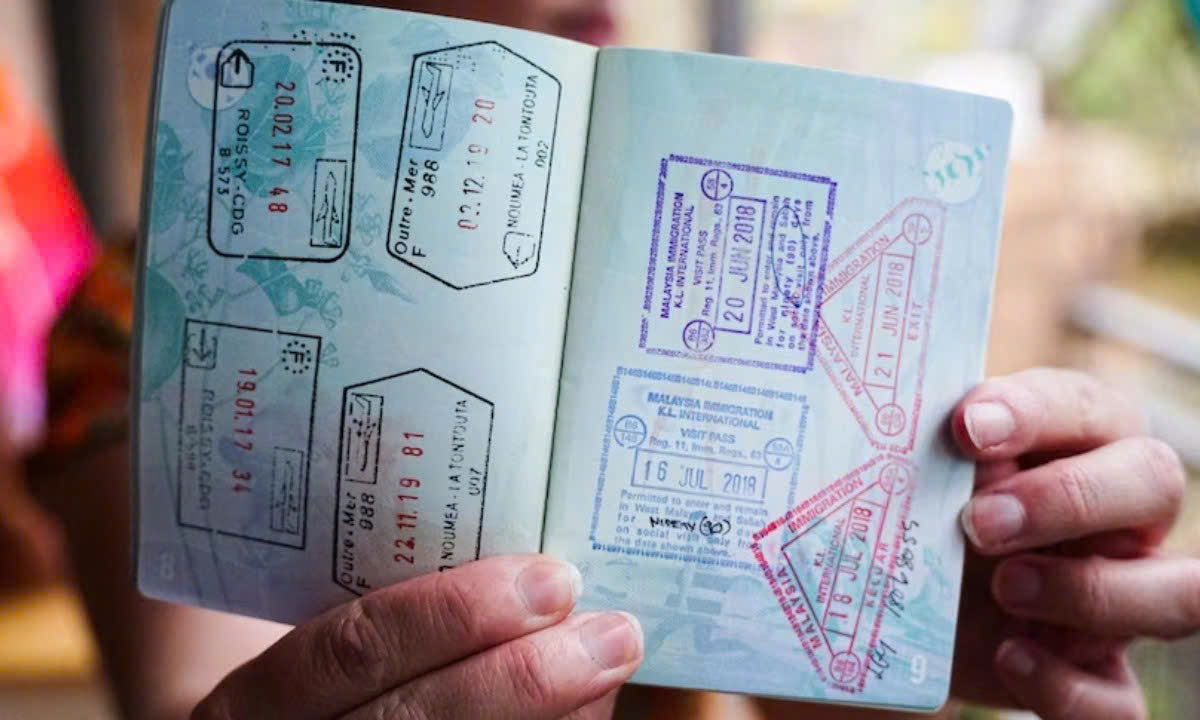Last week, Colin Nagy, a contributing writer for the travel website Skift, anticipated the usual bustling crowds at Bali's airport upon arrival from the US. He expected long lines and jostling crowds, but the reality was quite different.
"Scan your passport, look at the camera, and proceed when the gate flashes green," Nagy said, describing the swift and seamless process. The European Union (EU) implemented biometric clearance systems at most major airports for travelers entering Schengen countries earlier this year. Automated immigration control systems are becoming increasingly common worldwide, signaling the end of the era of passport stamps.
 |
Passport stamps. Photo: Keira Proust/ABC News |
Passport stamps. Photo: Keira Proust/ABC News
While acknowledging the security, control, and efficiency of the new systems in managing growing airport traffic, Nagy expressed nostalgia for the tangible mementos of his travels – the physical passport stamps.
The American travel writer keeps his worn passport tucked away in a drawer. The pages are filled with stamps and security stickers. For Nagy, each stamp represents a miniature memory of a past journey.
"Denmark's crisp, red entry stamp mirrors the country's orderliness. The Arabic script from Oman was stamped before I ventured into the Rub’ al Khali desert for a camping trip, while the one from Hong Kong recalls a visit before China tightened its control," Nagy shared.
He also has a smudged Zimbabwean entry stamp, a souvenir from an ink-stained finger of the immigration officer at Buffalo Range Airport. A Tanzanian visa spans an entire page, issued at Kilimanjaro Airport after his KLM flight. The Republic of Palau's entry stamp also fills a whole page, a reminder of the traveler's responsibility to the Western Pacific island nation.
"More than just a formality, the stamp acts as an 'ethical contract,' a pledge to protect the environment and act responsibly during one's stay," Nagy explained.
Passport stamps originated in the 1800s and became widespread in the early 20th century. Initially a tool for border control, they evolved into symbols of national identity and a form of soft power. Nagy observes that the stamps can reveal a country's openness to visitors, or conversely, its caution and strictness, as if still "scrutinizing data from the Cold War."
"Like imperfect analog signals, crooked or smudged stamps possess a unique charm and evoke memories of each journey," Nagy reflected, reminiscing about the anticipation of waiting for passport control and receiving those stamps.
For Nagy, a passport is more than just a travel document; it's a travel journal. He enjoys collecting the stamps, each a tangible link to the places he's visited.
As the world becomes increasingly ephemeral, signatures turn into biometrics, keys merge with phones, and stamps become digital scans, people decide what is worth preserving.
"Passport stamps don't glow or beep; they simply accumulate quietly over time, forming a mosaic within the pages," Nagy mused, expressing gratitude for having lived in an era where he could experience and collect these tangible traces of his travels.
Ha Phuong (Skift)












